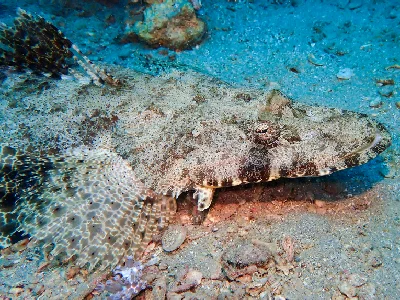Platycephalidae
The Flatheads Platycephalidae is a family of marine fishes belonging to the order Scorpaeniformes. It includes around 70 species commonly known as flatheads or flathead fish. These fish are characterized by their distinctive flattened heads with large, forward-facing eyes located on top of their heads.
The body of the Flatheads Platycephalidae is generally elongated and compressed, with a broad, flattened appearance. They have strong, bony heads with a series of ridges and spines that aid in predator avoidance and provide camouflage against their surroundings. Their mouths are large and often protrusible, allowing them to engulf prey in a suction-like action.
Flatheads Platycephalidae are predominantly found in the Indo-Pacific region, ranging from the coastlines of East Africa to 🇯🇵 Japan and 🇦🇺 Australia. They inhabit a variety of marine habitats including coastal reefs, sandy or muddy bottoms, and seagrass beds. Some species are also known to enter estuaries or brackish water environments.
These fish are mainly ambush predators, relying on their excellent camouflage to hide among the various substrates where they dwell. Their diet consists of a wide range of small fish, crustaceans, and molluscs that they capture by lying in wait and striking with lightning speed.
Reproduction in Flatheads Platycephalidae varies among species, but most are oviparous, meaning they lay eggs that develop externally. The eggs are usually attached to the substrate until hatching. The larvae undergo a planktonic phase before settling into their adult habitats.
Flatheads Platycephalidae exhibit a fascinating array of colors and patterns, allowing them to blend with their surroundings and become nearly invisible to both predators and prey. Some species have intricate patterns mimicking rocks, sand, or vegetation, while others possess vibrant colors for signaling or attracting mates.




